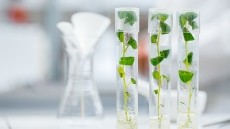Can unmanned aerial vehicles aid precision agriculture efforts? China trial sees positive results

UAVs were used to collect hyperspectral images of jujube (or red date) trees during its fruit expansion period to assess four physicochemical parameters, namely canopy chlorophyll content, leaf area index (LAI), tree height, and canopy area.
Based on the four physicochemical parameters, the researchers developed four jujube trees’ health assessment models, and found that the Partial Least Squares Regression Analysis (PLSR) had the highest assessment accuracy to determine the health status of jujube trees (R2 = 0.853; RMSE = 0.3).
The other three models were Random Forest (RF), Support Vector Machines (SVM), and Decision Tree (DT), with R2 increased by 0.127, 0.386, and 0.165 and RMSE decreased by 0.04, 0.175, and 0.063, respectively.
UAV hyperspectral remote sensing
The key determinants of the health status and potential of jujube trees are its physical and chemical parameters.
UAV hyperspectral remote sensing could be used to overcome the shortcomings of manually obtaining these parameters, which are labour- and time-intensive.
“UAV hyperspectral remote sensing combines the characteristics of high flexibility and low operational cost of UAV platforms with hyperspectral remote sensing technology to overcome the shortcomings of traditional jujube information acquisition.
“In addition, the continuous and fine spectral information of hyperspectral remote sensing provides reliable data support for the acquisition of jujube physical and chemical information,” the paper reported.
UAV remote sensing imaging is also able to deliver an inversion method, which has the ability to interpret highly complex measurements. In this study, the inversion method was the spectral index.
“The health assessment of jujube trees using only single physicochemical parameters is limited, and the inversion accuracy of each physicochemical parameter may be affected by various factors such as the surrounding environment and vegetation index selection, which may lead to fluctuations in health assessment accuracy,” the researchers explained.
In this study, the chlorophyll content and LAI of jujube trees using vegetation indices were inverted using the UAV images alongside ground data. Point cloud data were also combined with the UAV images to obtain the canopy area and tree height based on Mask R-CNN model.
Study area and data
The study was funded by The National Natural Science Foundation of China and Xinjiang Production and Construction Corps Key Field Science and Technology Tackling Program.
Researchers from Shihezi, China, selected three study areas, with the areas of 158m x 203m, 143m x 355m, and 139 m x 130m, respectively, in 224th Mission, Kunyu City, 14th Division of Xinjiang Production and Construction Corps.
Jujube trees studied are mainly transplanted as seedings maintained in spacing between 2m x 4m, which is the size of a standardised jujube garden.
As for the UAV, the Matrice 600 PRO hexacopter UAV was used, and adapted with the RONIN-MX multifunctional gimbal. Rikola hyperspectral imager produced by Finland’s SENOP company, equipped on the UAV, captured the hyperspectral images of jujube trees on 1st July 2021.
The field data acquired were a survey on the health status of the jujube trees, measurement of leaf chlorophyll content, leaf area index determination, and tree height and canopy area determination.
MERIS Terrestrial Chlorophyll Index (MTCI) measured for the chlorophyll content inversion, while Modified Soil Ratio (MSR) was used to calculate the LAI values. Mask R-CNN model was used to calculate the area of the canopy, and Canopy Height Model (CHM) was used to measure the tree height extraction.
“Based on the chlorophyll content, LAI, tree height, and canopy area obtained from the above operations, a PLSR model with the best assessment accuracy was constructed, and the R2 and RMSE were 0.853 and 0.3, respectively, which can realize high-precision assessment of the health status of jujube trees,” the researchers concluded.
Source: agriculture
“Multi-Parameter Health Assessment of Jujube Trees Based on Unmanned Aerial Vehicle Hyperspectral Remote Sensing”
Authors: Wu, Y., et al.























